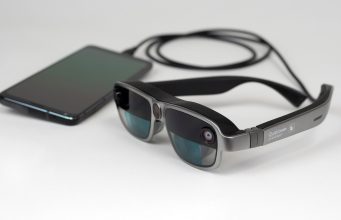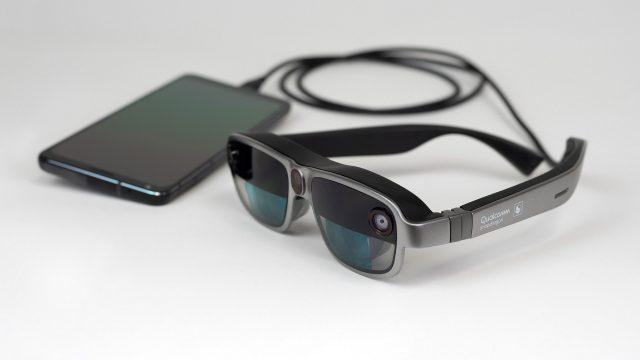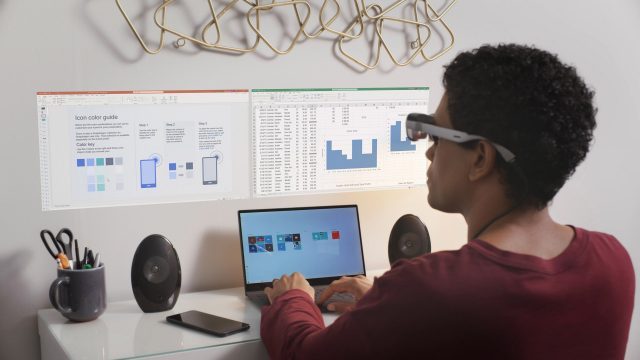
Qualcomm, maker of chips and technologies for mobile devices, today announced a reference design for a tethered AR headset which is tethered to a phone or PC but also contains its own chips to handle some onboard processing. The company calls the split-processing approach an AR ‘smart viewer’ headset.
Qualcomm, which makes the chips in many popular smartphones, has also been aggressively pursuing the growing XR market. The company offers two chips specifically intended for AR and VR headsets, Snapdragon XR1 & XR2, which are found in major devices like Quest 2 and HoloLens 2.
Part of Qualcomm’s efforts involve creating headset ‘reference designs’, which act as blueprints (built around the company’s chips, naturally) that other companies can use as a starting point to bring their own headset to market.
Qualcomm’s latest reference design is a tethered AR headset which the company calls an ‘AR smart viewer.’ What differentiates an AR smart viewer from a basic tethered AR viewer is the inclusion of onboard processing which helps to offload some of the work from the tethered device onto the headset itself.

Basic tethered AR viewers send all of their sensor data to the tethered host device (usually a smartphone) which handles all of the sensor processing while also rendering the AR environment and application. For devices not designed for sustained workloads, that can push a smartphone to its limits in both power and cooling capabilities.
AR smart viewers, Qualcomm contends, include their own onboard processor (Snapdragon XR1 in this case) which can handle some of the sensor processing and display tasks, ultimately reducing the power consumption of the tethered device by some 30%. The only downside, it seems, is greater expense due to the added processing hardware.
Though companies that adopt Qualcomm’s reference designs may further customize their product, the reference designs themselves offer a fairly clear picture of what kind of devices we’re likely to see in the next year or two.
For the AR smart viewer reference design, Qualcomm is offering the following specs:
- Snapdragon XR1 processor (additionally tethered to a host device)
- Micro OLED display from BOE (1,920 × 1,080 @ 90Hz)
- 45 degree field of view
- Dual monochrome cameras for 6DOF tracking (1,280 × 800, 150 degree FOV)
- RGB camera for photo/video (8MP, 120 degree FOV)
Qualcomm also says it has created readymade software which will allow the AR smart viewer to run standard Android apps in floating windows, in addition to immersive AR applications.
The company says AR smart viewer headsets can alternatively be tethered Windows PCs for more flexibility, including the ability to run standard Windows applications on virtual monitors.

Although Microsoft has its own ambitions with Windows Mixed Reality on both PC VR and standalone with HoloLens, the company seems open to Qualcomm’s efforts to include PCs as host devices for AR smart viewers.
“The AR smart viewer category is a great vehicle to deliver immersive experiences as accessories to mobile devices, Windows PCs or other host-compute devices,” Microsoft shared through Qualcomm’s press release. “We look forward to working with Qualcomm Technologies to bring [Microsoft AR] services towards this ever-expanding ecosystem of Snapdragon-based Mixed-Reality end-points.”
Further into the future, Qualcomm hopes that AR smart viewers will eventually break free of their tether and focus instead on a wireless connection to the host device.
The post Qualcomm Announces Tethered AR ‘Smart Viewer’ Reference Design with Onboard Co-processing appeared first on Road to VR.
from Road to VR https://ift.tt/3qNNJ30
via IFTTT
No comments:
Post a Comment